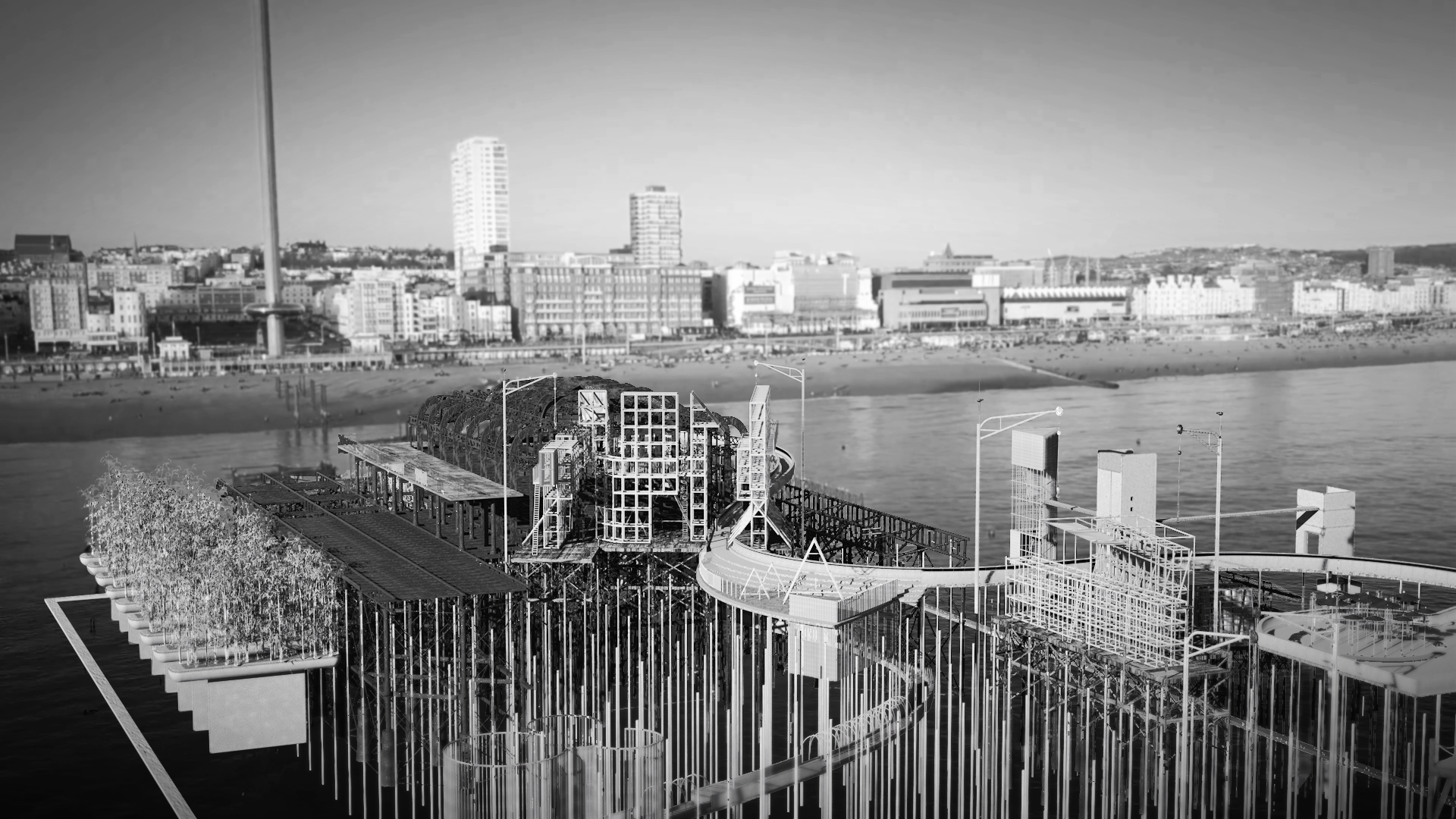The West Pier Garden: A Garden Without Flowers
2019
This project is inspired by the concept of the Japanese Zen garden - a garden that celebrates and demonstrates life and death, nature and time by the ruins and decays of architecture. Ideology of this project is supported with my Advanced Architectural Thesis “Gardens Through the Lenses”, 2019.
The project sited at the remaining structure of the West Pier in Brighton, which had been burnt down and damaged for several times since 2002. It is famous for being lost, and in states of transition for long period of time.
[Reimagination and vision of the future architecture ruins inspired by the paintings in Sir John Soane’s Museum. ]
This project is to commemorate the death of the pier and to celebrate the death and the release of the past. This spiritual garden collects memories at the temporary pavillions (brown colour) during the year; memories will be burnt together with the pavillions and released at the annual Burning Festival in December.
The changes of architectural material surfaces after the annual festival give senses of nature. The faded colour of the bamboo; the appearance of mosses and lichens; and the corrosion of the metal and concrete help visitors to see and perceive the beauty of nature, just like the idea of monk and priest to understand life at the Zen garden.
These pavilions, also called the Memories Holders, will be constructed and reconstructed annually for the next year upcoming festival.
This project is inspired by different cultural contexts. The Burning Pier is inspired by the Burning Ghat in India. This pier provides private spaces for people to burn their personal objects in the small boat in the sea. The Shrine Pavilion is inspired by the Shrine Moving Festival in Japan, they burn the sculpture to celebrate the past and pray for good fortune during the year to come.
The Tea Houses create viewpoints to the garden, they are also personal enclosed spaces for emotion reliefs and meditation.
This plan explains the concept of my design in three parts:
This rectangular frame is a floating wave breaker, the purpose is to reduce wave. This setting is a metaphor of a Zen garden itself, which the architecture inside the frame is manipulated and controlled just like the raking pattern of a Zen garden within the boundary;
Japanese flower arrangement is very architectural, I am greatly inspired by the arrangement from using the minimal materials to create dynamic form and structure in balance;
And finally, the design of the ribbon-like pathways of the garden are inspired by the traditional long scroll drawing, which the long scroll represented long journey. In this building, both pathways represent journeys to release the past and meditate.















